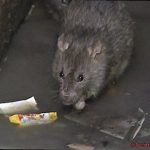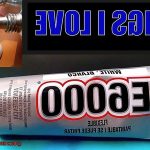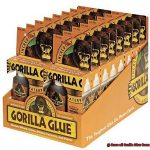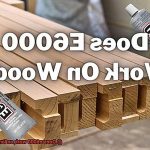Have you ever found yourself trapped in a sticky situation with permanent Glue Dots? Whether you’re an artsy individual, a DIY guru, or just someone in need of reliable adhesive for your projects, the question of whether these dots are actually permanent can be quite perplexing. So, let’s get to the bottom of it: do permanent Glue Dots really come off?
In this blog post, we’ll delve into the fascinating world of Glue Dots to unravel the truth about their permanence. We’ll explore their endurance, resistance against environmental factors, and even uncover some secret hacks for removing them if necessary.
So, grab your crafting gear and join me on this quest to demystify these seemingly invincible adhesive dots.

What are Permanent Glue Dots?
Contents
- 1 What are Permanent Glue Dots?
- 2 Are Permanent Glue Dots Removable?
- 3 Factors Affecting Removal of Permanent Glue Dots
- 4 Heat Removal Method for Permanent Glue Dots
- 5 Adhesive Removers and Solvents for Removing Permanent Glue Dots
- 6 Mechanical Methods for Removing Permanent Glue Dots
- 7 Cleaning Residues After Removing Permanent Glue Dots
- 8 Tips to Minimize Damage When Removing Permanent Glue Dots
- 9 Conclusion
Have you heard about the game-changer in the adhesive world? It’s time to meet Permanent Glue Dots. Get ready to dive into the world of these remarkable dots as we explore what they are, their incredible features, examples of their use, and how they outshine other types of glue.
What are Permanent Glue Dots?
Permanent Glue Dots are the superheroes of adhesives, small and round dots made of a pressure-sensitive adhesive. They possess an extraordinary power – the ability to create a strong and long-lasting bond between an array of materials such as paper, plastic, metal, fabric, and wood.
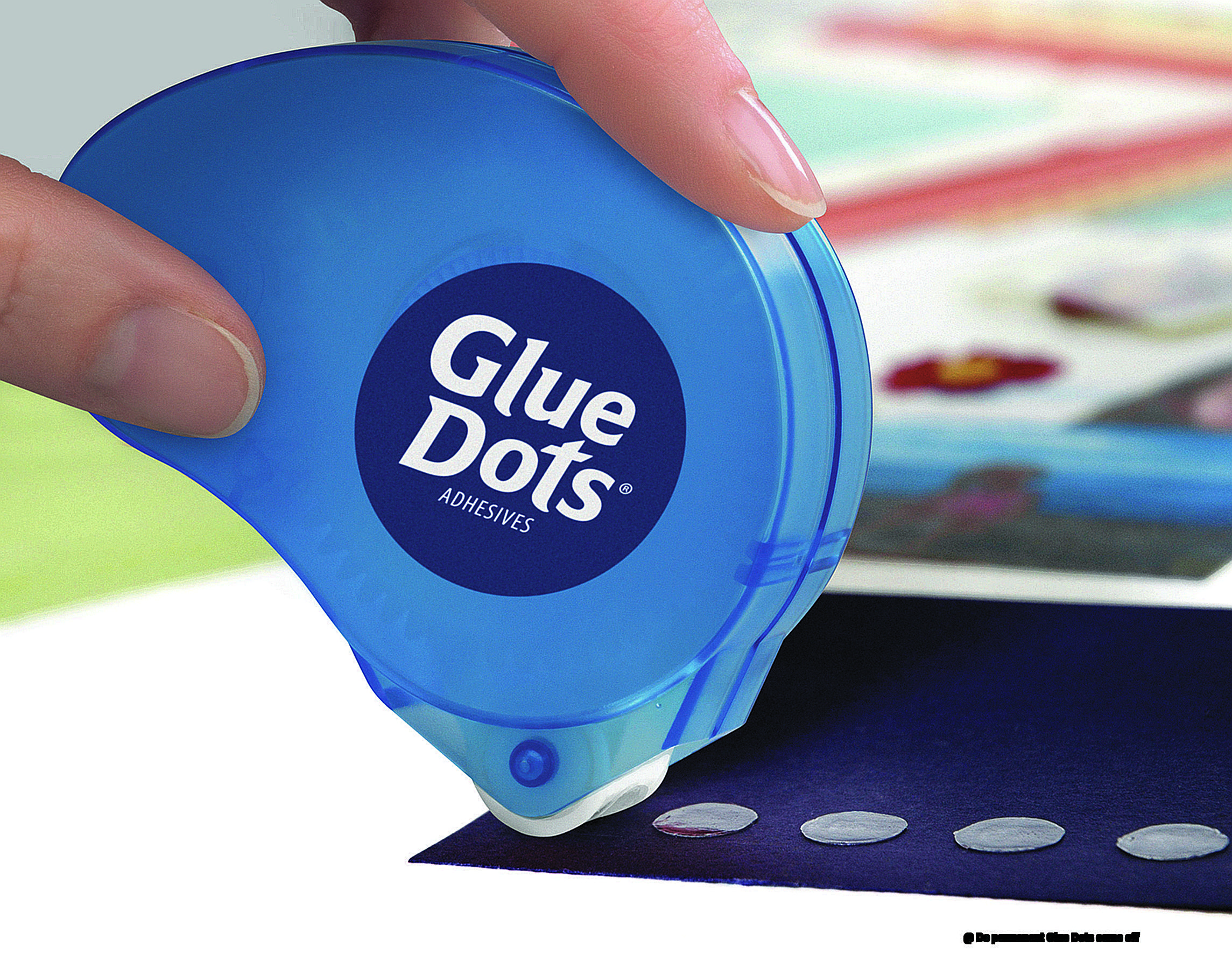
Peel them off from their backing sheet, apply them directly to your desired surface, and watch them work their magic.
Features that Make Them Unstoppable:
- Unyielding Strength: The adhesive used in Permanent Glue Dots is formulated to withstand moisture, heat, and aging. This ensures that your belongings stay firmly in place, even under the toughest conditions.
- Effortless Application: Forget about measuring or cutting; Permanent Glue Dots offer hassle-free usage. Simply peel off a dot and stick it onto your surface without any fuss.
- Quick and Clean: Bid farewell to messy liquid glue or tape; Permanent Glue Dots provide an instant bond without any drying time. No more worrying about items shifting or falling apart while waiting for your adhesive to dry.
- Invisible Warriors: The dots themselves are transparent or semi-transparent, allowing them to seamlessly blend in with the surface they adhere to.
Examples of Their Versatility:
Permanent Glue Dots are versatile warriors that excel in various applications. Here are just a few examples where they shine:
- Embellishment Attachment: Add buttons to fabric projects or attach beads to paper crafts with ease, thanks to the secure bond provided by Permanent Glue Dots.
- Packaging Security: Secure gift cards, bows, or other small items to packaging materials with these dots, ensuring they stay put during transit.
- 3D Structure Creation: Constructing 3D models or sculptures? Permanent Glue Dots are your trusted allies, holding the pieces together without leaving behind any visible marks.
How They Outperform Others:
Permanent Glue Dots offer a multitude of advantages over traditional adhesives. Unlike liquid glue or tape, they provide an instant bond without any mess or drying time. Furthermore, when applied correctly, they can be removed without leaving residue or damaging surfaces.
Are Permanent Glue Dots Removable?
In the adhesive world, permanent glue dots are like little superheroes, creating unyielding bonds that stick to any surface. But what happens when you need to remove them? Can these seemingly invincible glue dots be defeated?
Yes, they can. Despite their “permanent” label, permanent glue dots can indeed be removed with a bit of know-how and the right tools.
- Heat: One method for removing permanent glue dots is by applying heat. By using a hairdryer or a heat gun, you can soften the adhesive and make it easier to remove. However, be cautious not to overheat the surface or cause any damage.
- Solvents: Another technique involves using solvents or adhesive removers. These magical potions break down the adhesive, allowing for easier removal. Just make sure to choose a solvent safe for the surface and follow the manufacturer’s instructions.
- Brute Force: Sometimes, gentle scraping or peeling with a plastic scraper or fingernail can do the trick. Proceed with caution and gentleness to avoid damage.
Even if you successfully remove a permanent glue dot, it may leave behind residue or damage the surface in some cases. Always test any removal method in a small, inconspicuous area before tackling the entire dot.
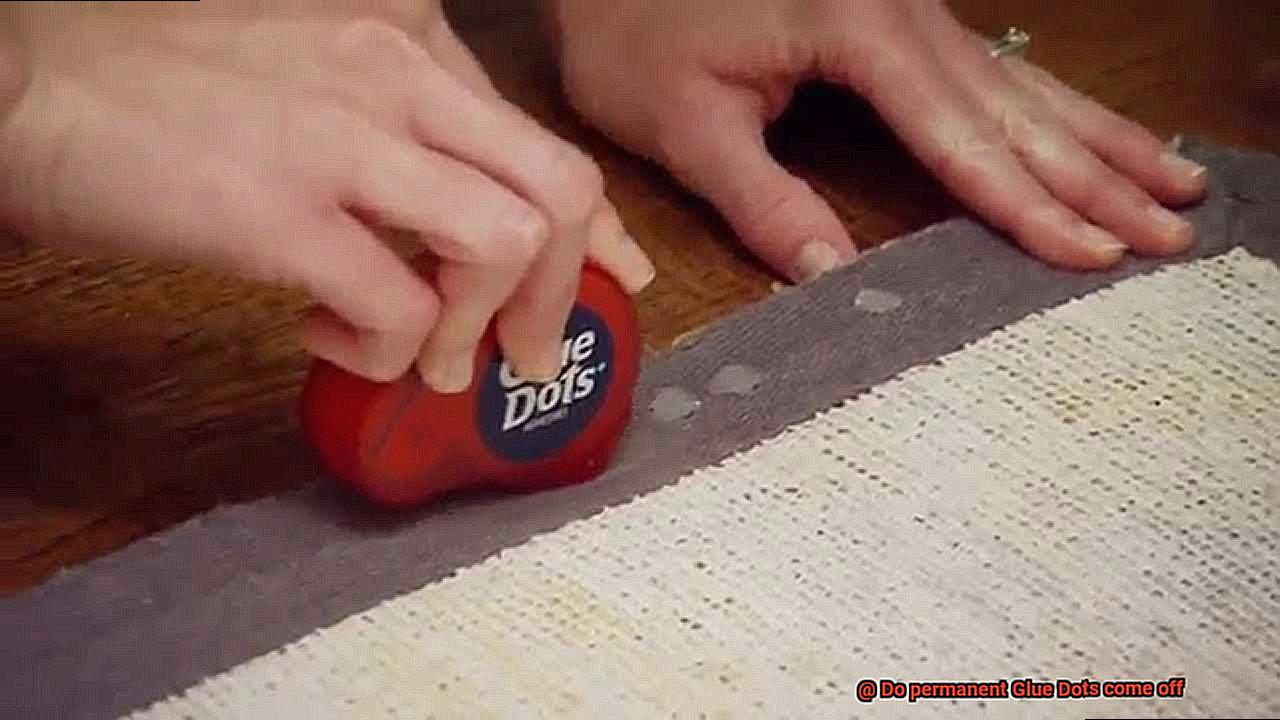
Factors Affecting Removal of Permanent Glue Dots
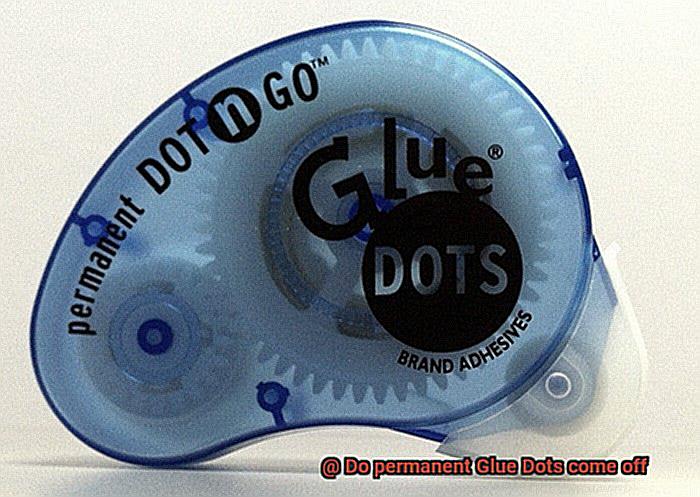
It can feel like an impossible task, as if those little sticky dots have a mind of their own. But fear not. By understanding the factors that affect the removal of permanent glue dots, you can conquer even the most stubborn adhesives. In this article, we will explore the various aspects that play a role in the removal process, equipping you with the knowledge to tackle those adhesive adversaries head-on.
Adhesive Type:
The type of adhesive used in permanent glue dots is the first factor to consider. Some adhesives are intentionally formulated to be more permanent, boasting stronger bonding properties. On the other hand, certain adhesives are designed to be removable, ensuring easier removal without any residue left behind.
Surface Material:
The material on which the glue dots are applied plays a significant role in their removability. The level of porosity and smoothness of the surface can impact how well the adhesive bonds and how easy it is to remove. Smooth surfaces like glass or metal offer less resistance compared to porous materials such as fabric or wood.
Duration of Bonding:
The length of time that glue dots have been in place affects their removal difficulty. The longer they have bonded, the more likely it is that the adhesive has cured or hardened, making removal more challenging. In such cases, applying heat or using solvents may be necessary to soften the adhesive and facilitate easier removal.
Temperature and Humidity:
Environmental factors like temperature and humidity also come into play. Extreme temperatures can weaken or strengthen adhesive bonds, thereby affecting removability. Additionally, high humidity levels can make adhesives tackier, making removal more difficult.
Application Technique:
The manner in which you apply the glue dots can impact their removability. Applying excessive pressure or spreading the dots unevenly can result in stronger bonds that are harder to remove. Adhering to proper application techniques, such as applying even pressure and ensuring complete contact, will make removal easier.
Removal Method:
The method used to remove the glue dots is critical. Gentle methods like peeling or rolling the dots off the surface may work for some adhesives, while others may require solvents or heat to soften the adhesive before removal. It is crucial to consider the surface material and follow appropriate removal techniques to avoid damage.
Heat Removal Method for Permanent Glue Dots
If you’re tired of battling adhesive foes that just won’t budge, we have a secret weapon for you. By harnessing the power of heat, you can easily remove those pesky glue dots without causing any damage to the surface.
Here’s how to unleash the power of heat and banish those glue dots for good:
- Set your heat source (hairdryer, heat gun, or iron) to a low or medium setting.
- Hold the heat source about 6 inches away from the glue dots and move it back and forth across the surface. The gentle heat will start softening the adhesive.
- Gently lift one corner of the glue dot using a plastic scraper or your fingernail. As you apply heat, slowly peel off the glue dot from the surface. Take your time and be patient to avoid any damage.
- If the adhesive doesn’t soften or you encounter resistance, slightly increase the heat and try again. But remember, don’t overheat the surface as it may cause damage.
- After removing the glue dots, there might be residue left on the surface. Use rubbing alcohol or adhesive remover specifically designed for this purpose to clean off any remaining adhesive.
Remember to test the heat method on a small, inconspicuous area before applying it to larger areas. It’s important to note that this method may not be suitable for all surfaces, especially those sensitive to heat or prone to melting. In such cases, consult professionals or follow manufacturer’s guidelines for safe removal.
Adhesive Removers and Solvents for Removing Permanent Glue Dots
Removing permanent glue dots can be a frustrating task, but fear not. There are adhesive removers and solvents available that can make this process a breeze. In this comprehensive guide, we will explore the different types of adhesive removers and solvents, their effectiveness, and important safety precautions to keep in mind. Get ready to say goodbye to those pesky glue dots.
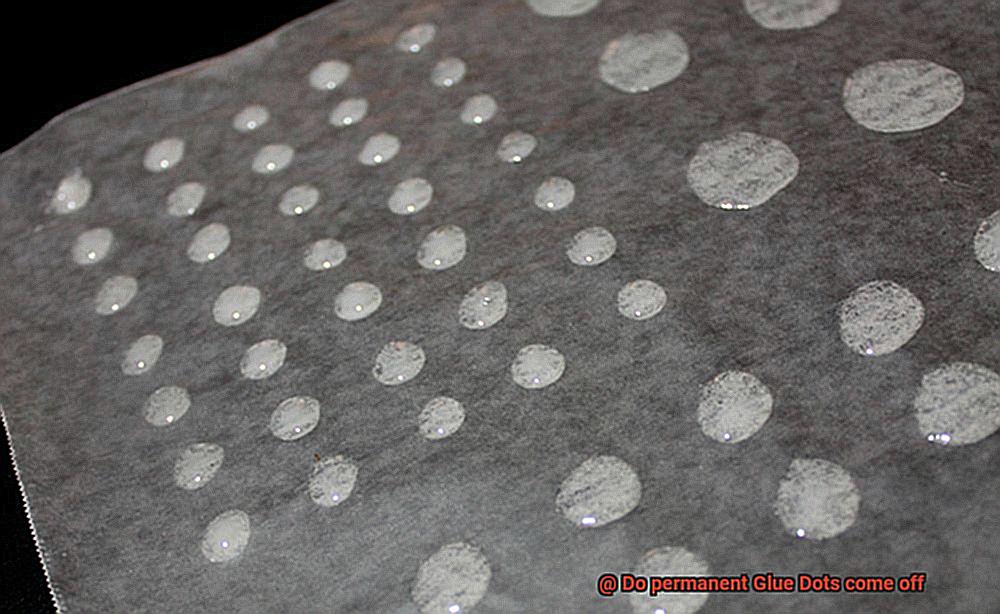
Acetone: A Powerful Solvent
Acetone is a highly effective adhesive remover that quickly dissolves glue dots. However, it should only be used on surfaces that can withstand its potent effects, such as glass or metal. To prevent damage, exercise caution and carefully follow the instructions provided by the manufacturer.
Rubbing Alcohol: Gentle Yet Effective
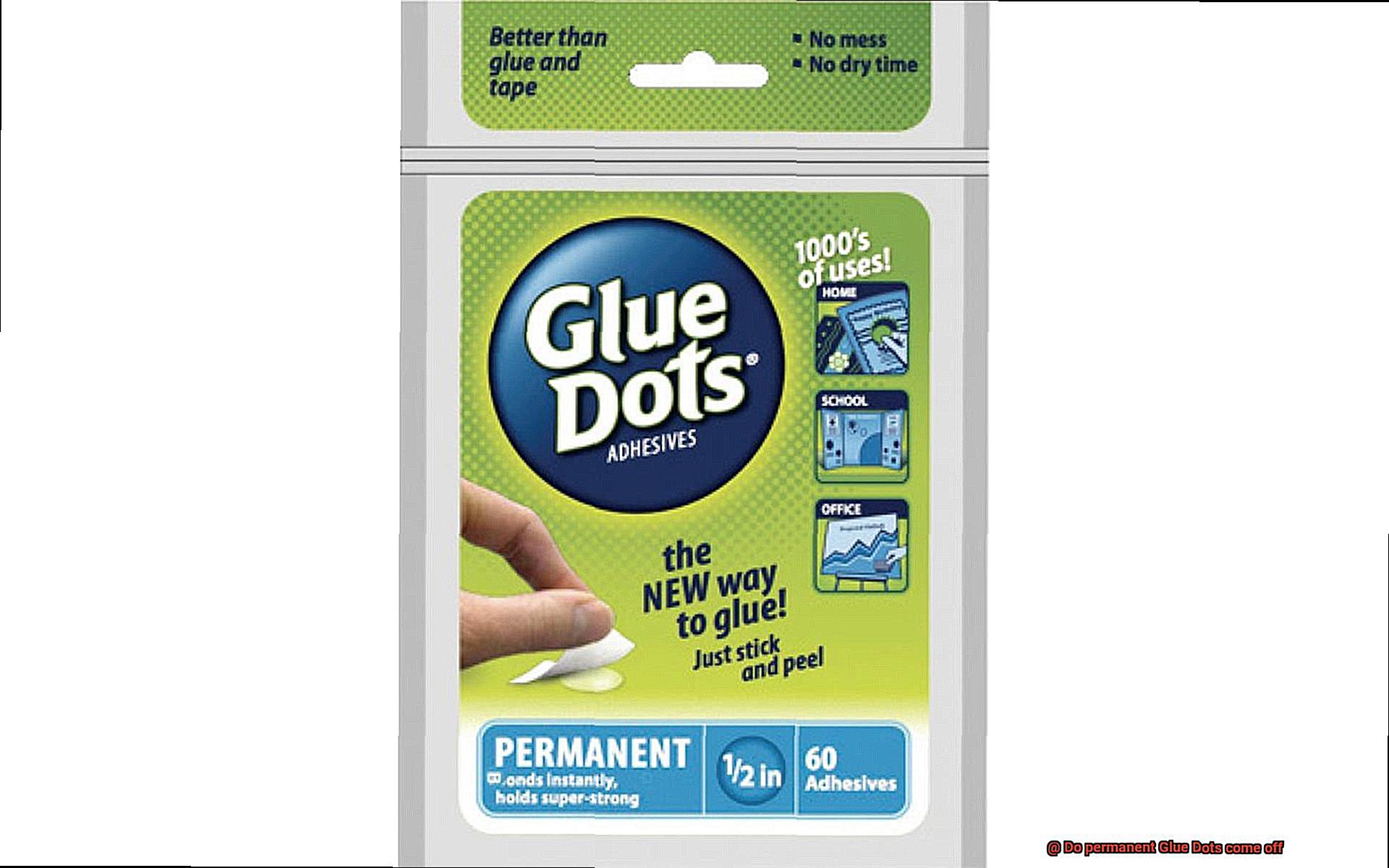
For a safer option, consider using rubbing alcohol to remove glue dots. It is compatible with a wide range of surfaces and can effectively break down the adhesive properties of the glue dots. As a precautionary measure, always test it on a small area first to ensure compatibility with the surface.
Goo Gone: The Commercial Solution
Goo Gone is a commercial adhesive remover specifically designed to eliminate sticky residues, including glue dots. It is widely available and easy to use, making it a popular choice among consumers. To achieve optimal results, follow the manufacturer’s instructions carefully.
Natural Alternatives:
If you prefer natural options, there are alternatives available. Mixing baking soda with water creates a paste-like substance that can help loosen and remove glue dots. Additionally, lemon or orange essential oils have proven effective in dissolving adhesive residues.
Safety Precautions:
When working with adhesive removers and solvents, safety should be a top priority. Always follow the instructions provided by the manufacturer to avoid accidents or damage. Wear protective gloves and ensure proper ventilation while using these products. Testing on a small, inconspicuous area is crucial to check for adverse reactions or potential damage to the surface.
Mechanical Methods for Removing Permanent Glue Dots
In this guide, we’ll dive into the world of mechanical methods for removing those pesky permanent glue dots. From the simplicity of scraping to the power of solvents, we’ve got you covered.
Scraping:
When it comes to simplicity and effectiveness, scraping is your go-to method. Armed with a plastic scraper or an old credit card, gently work your way from the edge to the center of the glue dot. No pressure, just precision.
Heating:
Heat can work wonders in softening glue dots. Grab a hairdryer, set it to low or medium heat, and let the warm breeze work its magic. As the glue dot softens, scrape it away with finesse using a plastic scraper or even your trusty fingernail.
Solvents:
Dissolving adhesive properties is a breeze with certain solvents. Isopropyl alcohol or rubbing alcohol is a popular choice. Moisten a cloth or cotton swab, rub it over the glue dot, and watch as it dissolves before your eyes. Wipe away the loosened adhesive for a clean finish.
Oil-based substances:
Embrace your inner chef. Cooking oil, baby oil, or olive oil can be excellent allies in breaking down stubborn glue dots. Apply a small amount onto a cloth or cotton swab, gently rub it over the glue dot, and let it sit for a few minutes. Then, scrape off the softened glue dot with finesse.
Adhesive removers:
For specialized solutions, adhesive removers are your best bet. These commercial products are designed to dissolve and remove glue dots effortlessly. Simply follow the instructions on the packaging and bid farewell to those pesky dots.
Sanding:
In extreme cases, sanding may be necessary. Take fine-grit sandpaper, gently sand the glue dot in circular motions, and watch as it breaks down. Wipe away any remaining residue with a clean cloth for a spotless finish.
Cleaning Residues After Removing Permanent Glue Dots
Now, it’s time to tackle the sticky residue they’ve left behind. In this comprehensive guide, we’ll explore a variety of methods and products to help you say goodbye to adhesive remnants and restore your surfaces to their former glory.
Rubbing Alcohol:
One of the go-to solutions for tackling adhesive residue is rubbing alcohol. Soak a cotton ball or pad in rubbing alcohol and gently rub it over the affected area.
The solvent properties of alcohol break down the glue, making it easier to remove. Remember to test it on a small, inconspicuous area first to ensure compatibility with the surface.
Adhesive Removers:
Specially formulated adhesive removers are available in spray or liquid form at hardware or craft stores. Follow the product instructions carefully, and always test on a small area beforehand. These removers are designed to dissolve adhesives without causing damage.
White Vinegar:
If rubbing alcohol or adhesive remover is not available, white vinegar can save the day. Create a solution by mixing equal parts white vinegar and warm water. Dip a cloth or sponge into the solution and gently scrub the residue. The acidity of vinegar helps break down the adhesive for easier removal.
Dish Soap:
Surprisingly effective at removing adhesive residues, dish soap is a common household item that can come to your rescue. Create a soapy solution by mixing a few drops of dish soap with warm water. Dip a cloth or sponge into the solution and gently scrub the affected area. Rinse with clean water afterward to remove any soap residue.
Plastic Scraper or Credit Card:
For stubborn residues, employ the gentle scraping power of a plastic scraper or credit card. Be cautious not to scratch or damage the surface while doing so. After scraping off as much residue as possible, proceed with one of the aforementioned cleaning methods to eliminate any remaining traces.
Heat:
In some cases, applying heat can loosen adhesive residues. Set your hairdryer to a low heat setting and direct warm air onto the residue. As the adhesive warms up, it becomes more pliable and easier to remove. Use a cloth or sponge to wipe away the softened residue.
Tips to Minimize Damage When Removing Permanent Glue Dots
Permanent glue dots are known for their strong adhesive properties, making them ideal for various craft projects. However, removing these stubborn adhesive dots can be a challenge and may lead to surface damage if not done carefully.
Here, we will provide tips and techniques to help you minimize damage when removing permanent glue dots.
Consider the Surface:
Before attempting to remove permanent glue dots, it’s crucial to consider the surface they are adhered to. Different surfaces require different removal techniques. Delicate surfaces like paper or fabric need extra care to avoid tearing or discoloration. For such surfaces, it’s best to seek professional advice or consult the craft store or manufacturer for specific guidelines.
Use Heat:
One effective method to soften permanent glue dots is by applying heat. Gently heat the glue dot using a hairdryer or heat gun on a low setting. The heat softens the adhesive, making it easier to peel off without causing damage. However, be cautious not to apply excessive heat, as it can damage certain surfaces.
Solvents or Adhesive Removers:
Using solvents or adhesive removers can help dissolve the glue dot and make it easier to remove. Choose a solvent that is safe for the surface being treated and follow the manufacturer’s instructions carefully. Test the solvent on a small, inconspicuous area first to ensure it doesn’t cause any damage or discoloration.
Be Patient and Gentle:
When removing permanent glue dots, patience and gentleness are key. Avoid using sharp objects or applying excessive force that may result in more damage. Instead, try peeling off the glue dot slowly and carefully using tools like tweezers or a plastic scraper if necessary. By exercising patience and gentle effort, you can minimize the risk of surface damage.
Residue Removal:
After successfully removing the glue dot, it’s common to find some adhesive residue left behind. To remove this residue, gently rub the area with a clean cloth dampened with warm soapy water or use a specialized adhesive remover. This will help lift and dissolve any remaining adhesive without causing damage to the surface.
CnxURppHdlg” >
Conclusion
Permanent Glue Dots are designed to provide a long-lasting adhesive bond, but can they really come off when needed?
The answer is yes. Despite their name, these powerful adhesive dots can be removed with the right technique and tools.
With a little patience and care, you can say goodbye to those stubborn adhesive dots and hello to a clean and pristine surface once again.


